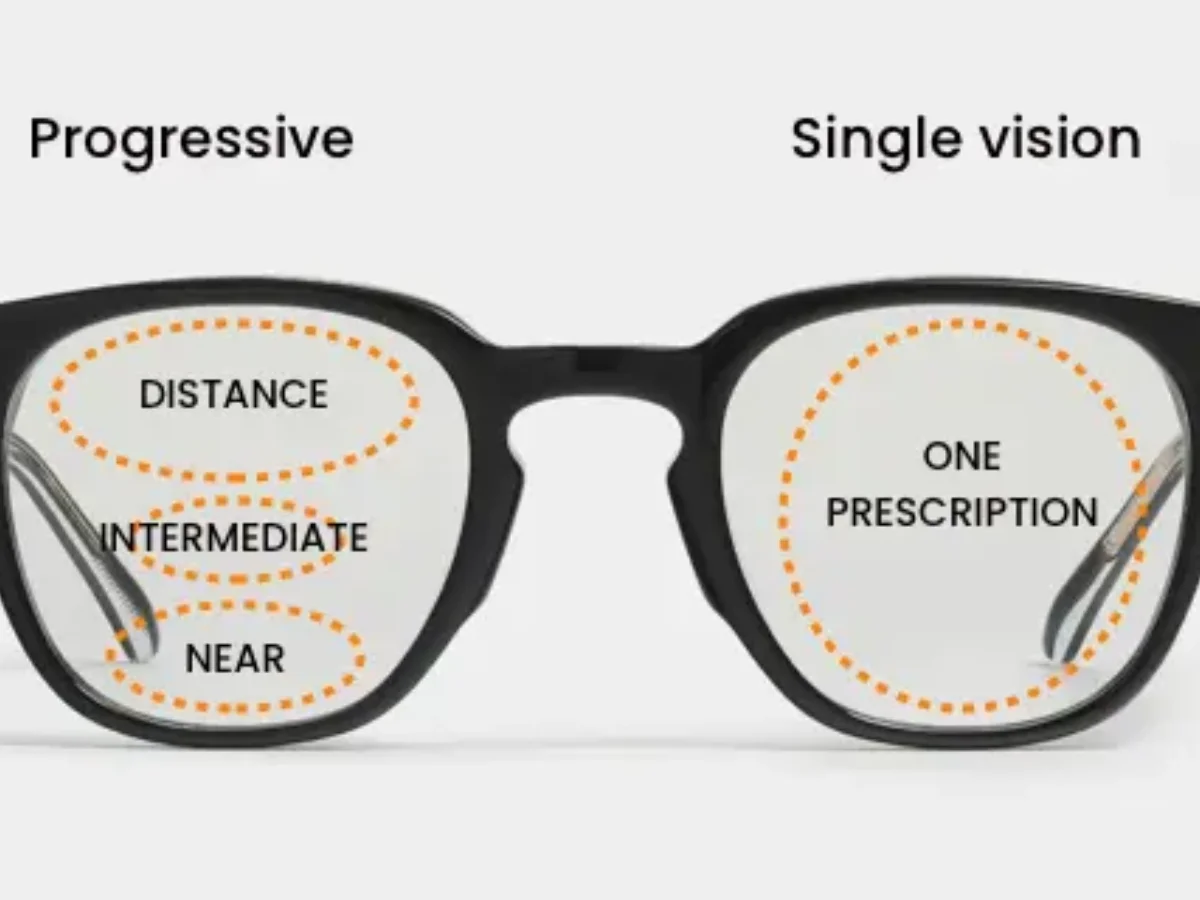Understanding your eyeglass prescription is essential for ensuring you have the right lenses to correct your vision. One common point of confusion is whether your prescription is for single vision or progressive lenses. In this comprehensive guide, we’ll walk you through the key differences between these two types of prescriptions, how to identify which one you have, and what to consider when choosing the right eyeglasses.
Introduction
Your eyeglass prescription contains valuable information about your vision needs, including whether you require single vision or progressive lenses. Understanding the key differences between these prescriptions will help you make informed choices when selecting eyeglasses.
Understanding Single Vision Lenses
Single-vision lenses are designed to correct one specific vision problem, either nearsightedness (myopia) or farsightedness (hyperopia). They have the same prescription power throughout the entire lens and are suitable for individuals who primarily need glasses for reading or distance vision.
Understanding Progressive Lenses
Progressive lenses, also known as multifocal lenses, are designed for individuals with presbyopia, a condition that affects near vision as we age. These lenses have a seamless progression of prescription powers, allowing wearers to see clearly at various distances—close-up, intermediate, and far away—without the visible lines often seen in bifocal or trifocal lenses.
Reading Your Eyeglass Prescription
To determine whether your prescription is for single vision or progressive lenses, you need to understand the following terms on your prescription:
4.1 Sphere (SPH)
This indicates the main prescription power for correcting nearsightedness (-) or farsightedness (+).
4.2 Cylinder (CYL)
If you have astigmatism, this value corrects the irregular curvature of your eye.
4.3 Axis
The axis works with the cylinder value to specify the orientation of the astigmatism correction.
4.4 Addition (ADD)
This value is crucial for identifying a progressive lens prescription and indicates the additional power needed for reading or close-up work.
Identifying Single-Vision Prescriptions
Single-vision prescriptions are relatively straightforward to identify. Look for the SPH value; if it contains only one number (positive or negative), you likely have a single vision prescription.
Identifying Progressive Prescriptions
Progressive prescriptions include an ADD value, typically found in the “Near Vision” or “ADD” section of your prescription. This value indicates that you require a multifocal lens to correct presbyopia.
Choosing the Right Eyeglasses
Once you’ve identified your prescription type, it’s essential to choose the right eyeglasses that suit your vision needs and lifestyle. Single-vision glasses are ideal for those with a specific vision issue, while progressive lenses offer seamless correction for multiple distances.
Frequently Asked Questions (FAQs)
8.1 How can I tell if my prescription is for single-vision lenses?
Check your prescription for the SPH value. If it contains only one number (positive or negative), it’s likely for single-vision lenses.
8.2 What is the key indicator of a progressive lens prescription?
Look for the ADD value on your prescription. If it’s present, it indicates a progressive lens prescription.
8.3 Can I switch between single vision and progressive lenses with the same prescription?
Switching between these two types of lenses with the same prescription may not be ideal. It’s best to consult with your eye care professional to determine the most suitable option.
8.4 Are progressive lenses more expensive than single vision lenses?
Yes, progressive lenses tend to be more expensive due to their multifocal design and customization.
8.5 What are the advantages of each type of prescription?
Single-vision lenses are simple and cost-effective, while progressive lenses offer seamless vision correction at various distances, eliminating the need for multiple pairs of glasses.
Conclusion
Understanding whether your eyeglass prescription is for single vision or progressive lenses is crucial for selecting the right eyewear. By deciphering the prescription details and considering your vision needs, you can make informed choices that enhance your vision and overall comfort.
Read More: https://www.rozyjos.com/
More Related:
Is Progressive Direct Cheaper Than Through an Agent?
Is it Cheaper to Buy Car Insurance Online or Through an Agent?
Does Progressive Cover U-Haul?
Does U-Haul Insurance Cover Damage to Other Vehicles?
Should I Get a U-Haul Collision Damage Waiver?
What Happens If You Don’t Pay Progressive Leasing
Liberal Christianity vs Progressive Christianity: Exploring the Differences

